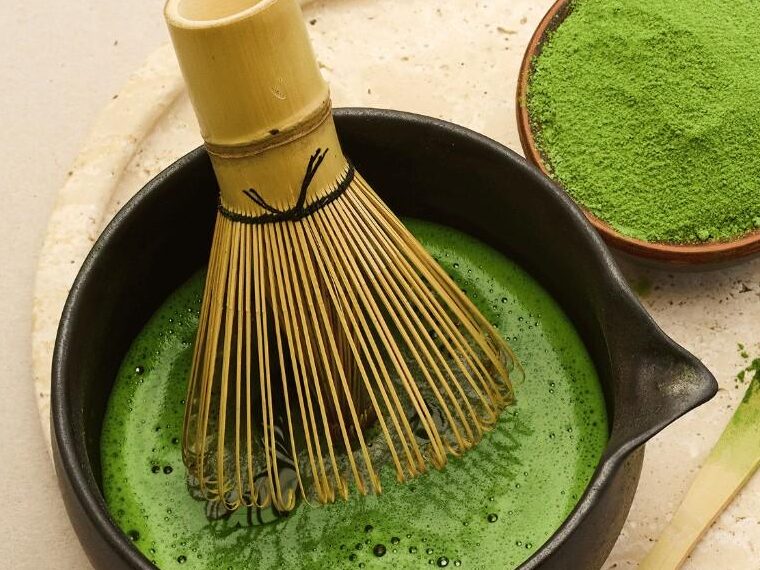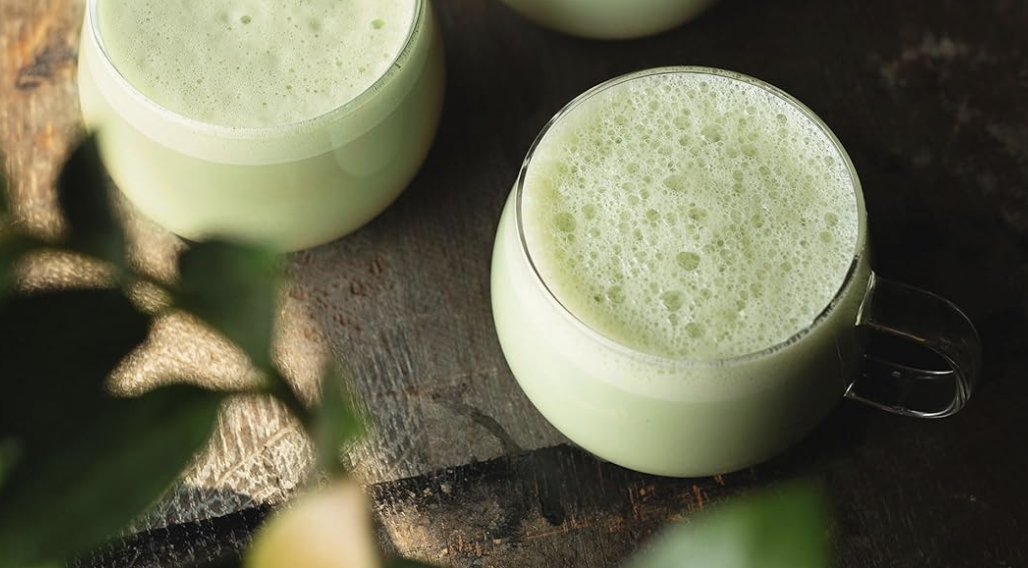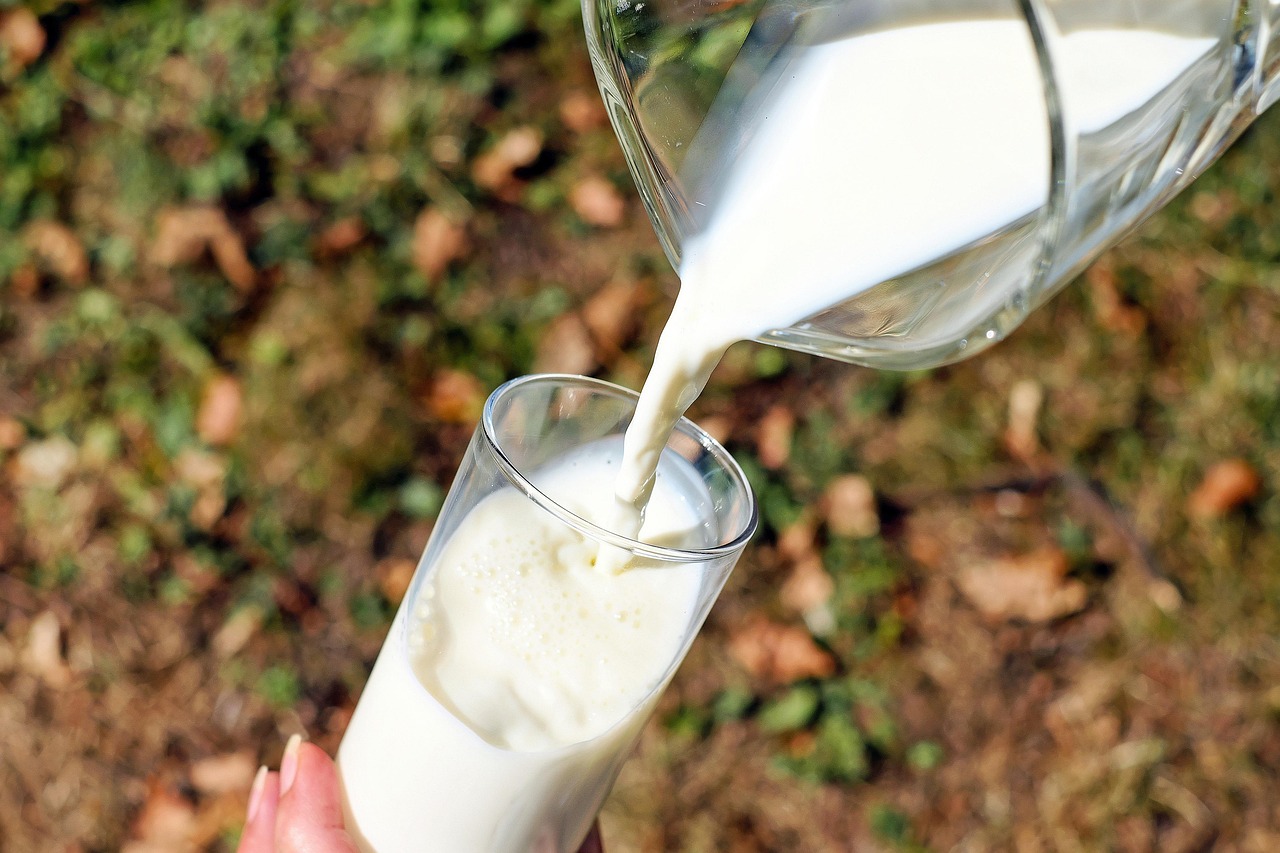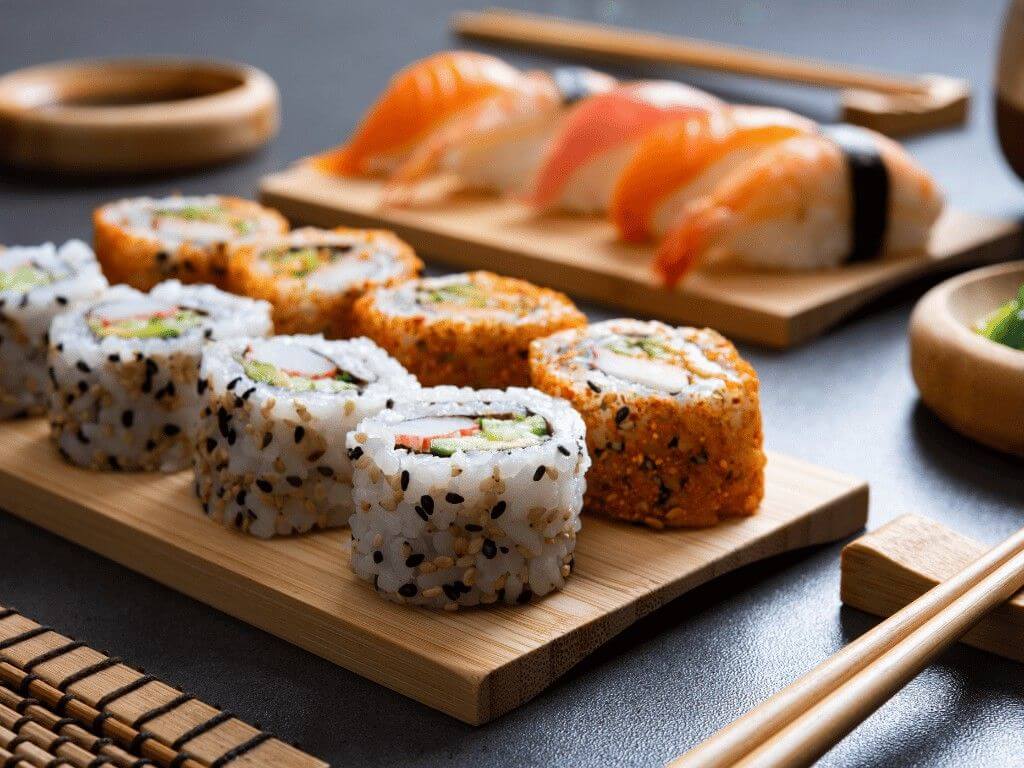What is the best matcha powder? If you take a look and scroll through your social media feed, there’s a good chance that you’ll come across up-close footage of a green liquid being poured into a glass, or someone holding a plastic cup filled with it. Once reserved for Japanese tea ceremonies, matcha has now turned into a global trend with Gen Z leading the change as an aesthetic and health staple.
Keep reading to find out what exactly matcha is, why Gen Z is getting hooked to it, and discover some popular, high-quality matcha powders to try.
Key Takeaways
- Made from shade-grown tea leaves, matcha is finely ground and differs from regular green tea in flavor, preparation, and nutrient concentration.
- Matcha is rich in antioxidants, polyphenols, and catechins, which may help reduce inflammation, improve insulin sensitivity, lower blood pressure, and support cardiovascular health.
- Matcha has become a trend, especially on social media platforms like TikTok.
- Top matcha brands include Ippodo, Yamamasa Koyamaen, Naoki, Marukyu Koyamaen, and Maeda-en.
- Using a bamboo whisk and storing matcha in airtight containers in the fridge preserves flavor and texture.
Our Top Matcha Picks
- Best Matcha Powder Overall: Ippodo Sayaka Matcha Powder
- Best Matcha Powder for Lattes: Yamamasa Koyamaen Matcha Samidori
- Best Organic Matcha Powder: Naoki Matcha Organic First Spring Blend Matcha
- Best Splurge Matcha: Marukyu Koyamaen Matcha Tenju
- Best Matcha Powder for Baking: Maeda-en Culinary Matcha Green Tea Powder
- Best Affordable Matcha Powder: Rishi Tea Sweet Matcha Powder
What Is Matcha?

Unlike English breakfast teas, Matcha is a vibrant green powder made from green tea leaves. It comes from the plant, Camellia sinensis. It is the same plant that is used to produce other tea types such as oolong tea, black tea, and green tea. But what makes matcha the way it is lies in the way it is being grown, harvested, and produced.
The process of producing matcha typically involves a series of steps. It starts with carefully cultivating shade-grown tea plants for several weeks before harvesting. During the harvesting process, only the smallest and greenest leaves of the plant are used. They are picked, steamed, and sampled to test for the quality and flavor [1].
Once the quality has been determined, it will then be dried and sorted into different grades. This is followed by a highly time-consuming process of sifting and cutting the leaves. Once done, the leaves will be kept refrigerated until they’re ready to be ground into a fine green powder using a stone mill.
Benefits of Drinking Matcha
According to Harvard Health Publishing, matcha powder contains plenty of antioxidants and phytochemicals that can have positive effects on our health when consumed [2].
For example, matcha contains anti-inflammatory polyphenols and antioxidants that help with insulin sensitivity.
According to a meta-analysis, catechins, which are antioxidants found in green tea, help to reduce blood pressure and lower “LDL” cholesterol levels [3].
Other health benefits claims are that matcha helps with improving cognitive function, cardio-metabolic function, and is anti-tumorogenesis. However, there’s still limited research evidence to support these claims [4].

Smarter Nutrition Tracking
Track calories and over 100 other nutrients all in one place.
Download Eato For FreeBest Matcha Powder of 2025, Ranked
If you’re here reading this article, that probably means that you are trying to find out what type of matcha powder you should be getting. Whether it’s simply to jump on the trend or you’re an avid matcha consumer looking for a new brand to try, you’re guaranteed to find something for you.
1. Best Matcha Powder Overall: Ippodo Sayaka Matcha Powder

Originally from Kyoto, Japan, the Ippodo tea brand has been around since 1717. Known for its high-quality matcha powder and various tea blends, this beloved brand has become a must-visit stop for many travelers in Japan. Among the different matcha powders offered, the Sayaka powder stands out as a smooth blend with just a slight tinge of umami and astringency. It serves as an introduction for consumers who are new to Ippodo.
What we love: The smooth texture of the matcha powder stands out the most, whether it’s prepared as an usucha, koicha, or latte. As you take your first sip, you will taste a light sweetness accompanied by a slight umami. It comes in a vibrant green color with a perfectly balanced flavor profile, suitable for those new to matcha or who seldom drink it. It’s also slightly more affordable compared to the Ummon blend that most people would recommend.
Origin: Kyoto Prefecture, Japan
Grade: Ceremonial-grade
Flavor notes: Light-hearted, smooth blend with umami and a hint of astringency
Shelf life: 180 days from the first packaged date
Price: $37 for 40g, $81 for 100g
2. Best Matcha Powder for Lattes: Yamamasa Koyamaen Matcha Samidori

A slightly lesser-known brand compared to Ippodo is Yamamasa Koyamaen, which is also made in Kyoto, Japan. As one of the oldest tea producers in Japan, you can be assured that the brand only uses the finest ingredients and production methods to produce its matcha powder blends. It’s considered a great entry-grade Matcha powder to use if you enjoy drinking matcha with milk but still want something that has a strong aroma and taste.
What we love: What’s great about the Samidori matcha powder is that it is rather versatile. It’s a good quality matcha that allows you to use it for everyday use as well as for cooking or making confectionery foods. It contains no additives and tastes rich and bold with a slight bitterness.
Origin: Kyoto Prefecture, Japan
Grade: Ceremonial-grade
Flavor notes: Rich and creamy vegetal notes with a subtle sweetness and low bitterness
Shelf life: 240 days from the first packaged date
Price: $29 for 30g
3. Best Organic Matcha Powder: Naoki Matcha Organic First Spring Blend Matcha

Naoki Matcha is a brand that started in 2015 and has since gained popularity for its premium tasting matcha, more notably the superior blend that they offer. While it is technically an American brand, their matcha powders are sourced from various Japanese tea estates across Japan, handcrafted by tea masters, and processed in factories. The Naoki Matcha First Spring Blend is possibly one of the best organic matcha powders we’ve found so far. It has a smooth texture that’s accompanied by dark, roasted notes similar to the superior blend.
What we love: We love that the Naoki matcha has a smooth texture combined with a balanced flavor of bitterness, sweetness, and umami. It can be used mainly for preparing usucha, lattes, and cold brew, making it also a versatile blend like the Yamamasa Koyamaen one. Plus, it’s certified organic under the Japanese Agricultural Standards (JAS).
Origin: Kagoshima Prefecture, Japan
Grade: Ceremonial-grade
Flavor notes: Dark cacao, roasted notes with light umami
Shelf life: 365 days when unopened
Price: $26.99 for 40g
4. Best Splurge Matcha: Marukyu Koyamaen Matcha Tenju

Marukyu Koyamaen is another highly regarded tea brand, alongside Ippodo Tea, for its fine quality of matcha powders and green tea brews. It has been producing some of the best teas for over 300 years in Uji, Kyoto. One of their principal matcha blends, the Tenju blend, is a top favourite among matcha lovers for its distinctive aroma and taste despite the considerably higher price tag. It’s listed as an award-winning matcha powder, having won Japan’s National Tea Competition.
What we love: The Tenju blend is crafted from carefully hand-picked tea leaves that have been tirelessly milled to produce a rich and robust flavor, ideal for thick matcha (koicha). Even though it’s priced much higher than many other blends, it offers a buttery smooth texture and sweet aroma that is hard to replicate.
Origin: Kyoto Prefecture, Japan
Grade: Ceremonial-grade
Flavor notes: Nutty, floral, and creamy with a pronounced umami flavor
Shelf life: 210 days from the first packaged date
Price: $86 for 20g, $169 for 40g

Smarter Nutrition Tracking
Track calories and over 100 other nutrients all in one place.
Download Eato For Free5. Best Matcha Powder for Baking: Maeda-en Culinary Matcha Green Tea Powder

Maeda-en is a brand that you’ve probably seen or heard about, as it’s widely accessible in 40 different countries. While Maeda-en was founded in the USA by Taku H. Maeda, all of its green tea is sourced and imported directly from Japan. The Maeda-en culinary-grade matcha powder is 100% Japan-grown and gluten-free, fit for a wide range of recipes. At only $9 for 28g, it’s one of the most affordable matcha powders for cooking and baking.
What we love: It comes in a beautiful green shade with a slightly bold and astringent taste. It has a moderate depth of umami that you can thoroughly taste when combined in baked goods. The robust flavor stands out even with heat and other ingredients, which is perfect for cakes, pastries, and ice cream.
Origin: USA
Grade: Culinary-grade
Flavor notes: Bold and slightly astringent with pronounced grassy, vegetal notes
Shelf life: 90 days
Price: $9 for 28g
6. Best Affordable Matcha Powder: Rishi Tea Sweet Matcha Powder

Rishi Tea Sweet Matcha Powder combines authentic stone-milled Japanese Matcha, sourced from Shizuoka Prefecture, with pure cane sugar to create a smooth and mellow drink for casual enjoyment. It’s a good option for those who find traditional matcha too bitter, as it comes pre-sweetened but still retains the slight umami that many matcha drinkers enjoy. Also, the prices are considered budget-friendly for those new to matcha and just trying to see what the hype is all about.
What we love: The powder can be used for lattes, smoothies, and even desserts. Since it’s sweetened, it takes away the astringency and bitterness that come with traditional matcha powder. It’s suitable for the casual drinker looking for a smooth and approachable taste.
Origin: Shizuoka Prefecture, Japan
Grade: Barista-grade
Flavor notes: Smooth, mellow, and naturally sweet aroma with low bitterness
Shelf life: 180 days once opened, 365 days unopened
Price: $11.50 for 125g
How We Tested for the Best Matcha Powder
To determine the best matcha powders out of so many different ones to feature, we sampled each product in a few ways. Making it into a latte and usucha, and doing a matcha quality test on paper.
We started by putting different kinds of powder onto a paper and swiping it in one line with our finger. If it appeared as a vibrant green color with thick and bold lines, it meant that the matcha was of high quality. If it didn’t have that, we would instantly exclude it from our list. We also tested how smooth the lines were when we swiped and excluded those that appeared grainy or coarse.
After testing on paper, we continue the test by preparing it in a latte and usucha form. From here, we conducted a taste test and evaluated each product based on its flavor, aroma, and texture. To ensure it’s a fair comparison, we used the same amount of matcha powder for all the drinks and whisked it with a traditional bamboo whisk.
Last but not least, we also took price and whether it’s value for money into consideration.

Smarter Nutrition Tracking
Track calories and over 100 other nutrients all in one place.
Download Eato For FreeWhy is Gen Z Obsessed with Matcha?
If you haven’t already heard, there has been a matcha craze going on everywhere. What started as a viral TikTok and Instagram aesthetic has since made its way across cafes, cementing itself as a staple of Gen Z culture.
It is so much so that it has sparked a wave of creative twists on the classic matcha latte; think strawberry matcha, mango matcha, and banana pudding matcha. But why is it so popular, especially among Gen Z?
Well, one reason for this has to do with the weakened Japanese currency, making Japan an attractive tourist destination, on top of its pre-existing popularity with Japanese cuisine like sushi. It saw millions of tourists travelling over to get their hands on Japanese goods such as matcha powder at a much cheaper price. The huge global demand for matcha came to a point where Japan faced a matcha shortage and had to limit tourist purchases of matcha powder [5].
To further add to this, it became a huge trend on TikTok with the ‘matchatok’ hashtag used in over 197K posts with millions of views. With influencers from all over the world showcasing their perfect matcha recipes, it’s become a health and lifestyle statement that many are trying to replicate for the sake of it.
Users on Reddit also share similar sentiments about how it’s merely a trend and aesthetic that people are following [6].
Things to Know About Matcha
Here are some things to know about matcha if you are contemplating buying it to try:
a. It’s not the same as green tea
Matcha and green tea come from the same plant, but matcha is made from shade-grown tea leaves ground into a fine powder, while green tea consists of the leaves themselves.
b. The way you store it matters
Matcha is surprisingly sensitive, just like spices and wine. It can oxidise easily and lose its unique, intense flavour when exposed to light, air, or heat. Remember to always store your matcha powder in an airtight container in the fridge to keep it fresh.
c. Culinary matcha is not the same as ceremonial matcha
Ceremonial-grade matcha is less bitter, smoother, and meant for drinking, whereas a culinary-grade matcha is stronger and tends to be more bitter, used in baking and desserts.
d. Use a bamboo whisk instead of a frother
A traditional bamboo whisk (chasen) creates a silky, frothy consistency without clumps, improving both the texture and the presentation.
e. Hot whisk vs. cold whisk
Whisking matcha with warm water enhances its aroma and strength, while whisking it cold produces a milder, subtler flavor.
5 Best Matcha Brands From Japan
Besides the brands and powders that we’ve listed above, here are some other matcha brands that you can keep an eye out for when you’re shopping for matcha powders online or when you’re in Japan the next time:
1. Tsujiri
Established in 1860, Tsujiri is a popular tea brand in Japan that specializes in premium ceremonial-grade matcha for modern desserts and beverages. To date, they’ve managed to grow and expand their operations to 10 other countries outside of Japan.
2. Morihan
Having been established since 1836, Morihan is a nearly 200-year-old tea producer for a wide range of matcha powders for drinking, baking, and cooking.
3. Nishio Matcha
Originating from the Aichi Prefecture, Nishio matcha is celebrated for its vivid green color, smooth texture, and naturally sweet, umami-rich flavor. It offers many choices for lattes, desserts, and traditional tea ceremonies alike.
4. Gion Tsujiri
Gion Tsujiri is an extension of the original Tsujiri brand, prized for its matcha sweets, parfaits, and other matcha products with a deep umami and refined aroma.
5. Nakamura Tokichi
Nakamura Tokichi was first established in 1854 by Konakamura Tokichi after changing his name to Nakamura Tokichi I.
The Final Takeaway: Our Matcha Verdict
From the oldest tea brands in Japan to modern imported blends, there’s always a matcha brand for different taste preferences and lifestyles. If you are looking into making matcha drinks, we suggest opting for a ceremonial-grade matcha powder, which can be found in our list above. If it’s for baking, stick to culinary-grade matcha.
You can also take your love for matcha a step further by logging your recipe creations in seconds with the Eato app. Track your daily matcha intake, calories consumed, nutrition, and learn how to balance it out with any diet. Try it today for free!

Weight Loss Has Never Been Easier
Get accurate nutrition info instantly. Keep track of your progress.
Download Eato For Free



